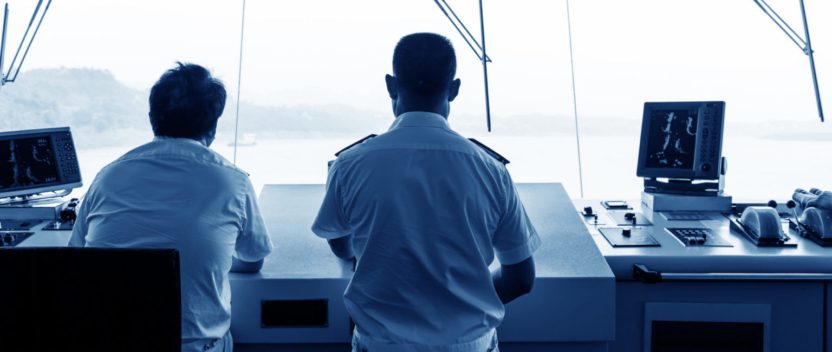For the driverless ship, read the paperless office
There is an unwritten rule of journalism that if a headline asks a direct question, then the answer to that question is usually negative. Thus to the question posed by Bloomberg News last week, Will Drone Cargo Ships Sail the Seven Seas? the answer seems a given.
Un-manned or drone ships are the latest itch that an industry desperately seeking to improve productivity and reduce costs seems unable to leave unscratched. And it is a good story, one which combines the industry’s love-hate relationship with technology with issues of cost and crewing and more lofty subjects such as navigational skills and the role of the master.
In fact Bloomberg’s discovery of the issue, thanks to some recent comments by Rolls-Royce’s Oskar Levander, caught the newswire up on an ongoing debate involving owners, equipment manufacturers, classification, insurers and professional associations among others.
The debate is hardly new. As Michael Grey wrote more than a decade ago, the last time this idea was seriously considered was during the 1980s when shipping slumped and bunker costs soared. The Japanese owners who pondered it back then made it work too, piloting a 20,000dwt bulker across the north Pacific from Japan to a West Coast US port by remote control, accompanied by the command ship.
The project foundered when the owners found it was simpler to hire cheaper foreign crews and cyclical bunker costs turned down again.
The revived debate has made for fairly predictable reading but the conversation this time ignores one or two prescient factors.
First the assertion that it is ‘technically possible’ already to sail unmanned ships, made by a number of industry pundits is open to some question. Even if one assumes that the 40 watt light bulb at 35,000 km that is GPS (or Galileo, or GLONASS) were robust enough to enable the required position fixing, then wouldn’t such ships be required to effectively operate with differential GPS for accuracy, with huge levels of onboard redundancy?
Shorter term issues include designing a new generation of ships that can combine traditional efficiency (cargo capacity) with modern efficiency (fuel savings). Class society ABS last year produced a White Paper that argued that the ability to tinker with naval architecture and fitting energy saving devices would very quickly hit a wall and that some truly innovative approaches would be needed to design truly efficient ships.
Third, as has been observed by anyone working in a shipping company, shipmanager agency or any service supplier, the most basic – though far less sexy – need is for an improvement in processes and procedures that are used to ship billions of tonnes of goods and raw materials around the world on an annual basis. Anyone who recalls the term ‘paperless office’ from the 1970s and 1980s is likely to have a similar reaction to hearing the term ‘driverless ship’.
Fourthly, as a manufacturer of integrated bridge systems remarked to me at SMM a few years ago, though it is quite possible to track steer a ship on a pre-planned route, the likelihood of an un-manned ship being cheaper to build and operate than one with a skeleton crew onboard is slim.
Un-manned ships are as much a philosophical challenge as they are a technical one. Falling manning levels are already a major concern because even though they promise to reduce costs they raise questions of safety. Just because it is possible to remove human beings from some functions, does not mean that there is a genuine benefit to removing crew from ships.
A future that includes autonomous vessels could see the collapse of complete sections of the maritime industry with doubtful returns as a dividend – hardly something that the governments of seafaring nations would support. There are countless regulatory reasons against it, not least the need to re-write Colregs and other legal issues as well as questions of insurance and liability.
To understand the leap that this would represent, communications is a useful parallel. Rather than continue to ponder why it is that owners appear reluctant to pay much towards improved crew and business connectivity, perhaps a better question is why the industry – owners, associations, regulators et al – have let shipping fall so far behind, failing to keep pace with even the most basic advances in the communications revolution that we take for granted onshore.
The changes taking place right now – the launch of Inmarsat GX, the expansion of Intelsat EPIC and new services from VSAT providers – suggest that we are finally on the cusp of a change from systems that mariners of 30 years ago would recognise to ones that are at least comparable in functionality to what is being used ashore.
But for the last 10 years at least, the navigation community has been calling for a more robust back-up to the highly vulnerable GPS and its alternatives, finally getting some weight behind eLORAN in the UK and Europe just as the US decided it was no longer needed and closed its coastal stations. This hardly creates the expectation that a global, harmonised system for remote control shipping can be created, regulated and maintained.
Continued work is required to improve not just the professional competence of people onboard but the way that they interact with machines and systems. Closer examination is needed of why ship designers and builders fail on so many occasions to create bridge designs that are user-centric with truly integrated systems.
The fact that all the industry opinion gathered by the author of the Bloomberg story was negative rather proves the headline hypothesis, but it also demonstrates a broader point. People are not a problem to be removed from shipping. Rather it is the hardware and the systems which need to improved in order to serve them better.


